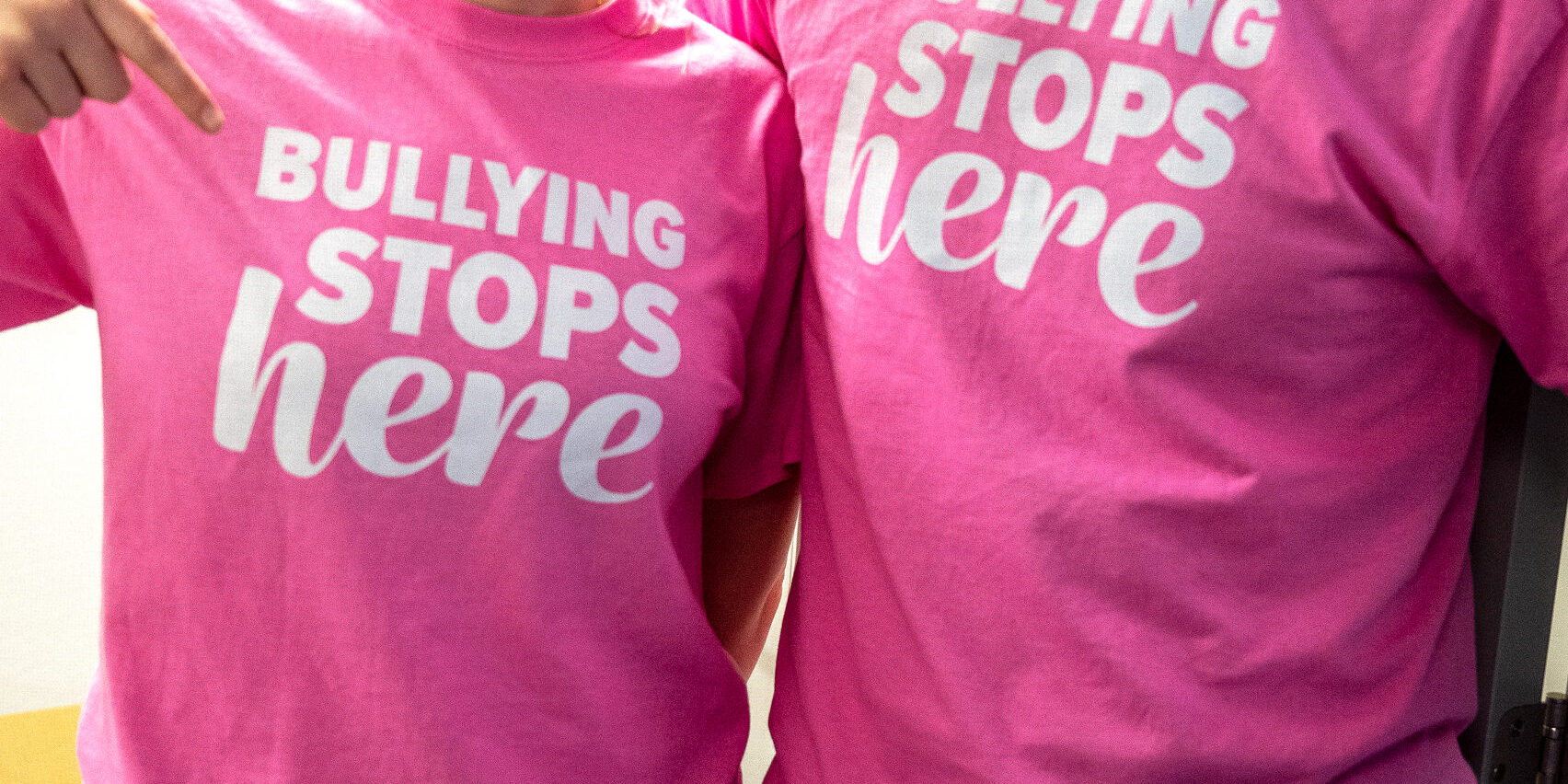In September 2007, a grade nine student at Central Kings Rural High School in Cambridge, Nova Scotia wore a pink polo shirt on his first day of school. He was met by a wave of ridicule and bullying from his classmates, but as the news of the incident spread around the school, David Shepard and Travis Price, two grade 12 students, decided that enough was enough.
That afternoon they went to a nearby clothing store and purchased 50 pink shirts before going online and spreading the word among their friends and classmates to participate in what they called a “sea of pink” to respond to the bullies’ actions.
The next day, hundreds of students showed up at school wearing pink shirts. When the bullied student entered the school, he was stunned by the outpouring of support from his classmates. The event silenced the bullies, and it proved that activism can have positive results on bullying.
After the CBC was informed, the incident gained international attention and spawned the birth of Pink Shirt Day. Held on the last Wednesday of February each year, Pink Shirt Day is a day dedicated to efforts aimed at eliminating bullying in our communities.
1 in 3 school-aged children report being bullied in school, but the issue is not isolated among youth. Workplace bullying and cyberbullying affect vast swathes of people around the world, and this type of behaviour creates toxic environments and diminished mental health in individuals targeted by bullies.
As the head of Human Resources for the Hazelwood Group, Katherine Lamb sees Pink Shirt Day as a way to shine a light on a difficult topic. “This day is important because bullying still exists,” Katherine said, responding to questions about the event. “And not just on the playground. Workplace bullying is also a huge issue.”
In Canada, 19% of women and 13% of men reported that they had experienced harassment in their workplace in the last year. Verbal abuse is the most common type of bullying reported followed by humiliating behaviour. But Katherine feels that bullying extends beyond hurtful words. “Bullying is behaviour that purposely makes you feel isolated, alone, depressed, and ashamed.”
Bullying is a difficult topic to bring up in the workplace. People who experience this type of conduct often feel they have nowhere to turn for help. This is why Katherine believes that Pink Shirt Day is an excellent way to shine a light on the topic and give people a chance to open up about bullying. “By having conversations about this issue, we can put a spotlight on the fact that bullying isn’t acceptable,” Lamb said when asked about addressing bullying at work. While she believes this day can be a great way to initiate a conversation, she admits there is still a long way to go. “I’m not so naïve that I think recognizing this issue one day a year will make bullying disappear, so that’s why we need to have continuing dialogue and it’s why we have policies against bullying in our workplace.”
A toxic work or school environment breeds fear and hostility, therefore, it is crucial that people take action when they see bullying in any setting. “Being bullied can have a serious impact on a person, and that impact has the potential to last months and even years past when the initial bullying happened,” Lamb said concerning the need to address bullying. “The effects can be lifelong and debilitating.”
Hazelwood recognizes bullying as an important issue both among children and adults. On top of wearing pink shirts to show support, the group hopes to show strength in solidarity. “It is our aim to lend our voices and support to anti-bullying efforts across the world,” Katherine said, addressing Hazelwood’s position regarding the event. “By recognizing this day, Hazelwood presents a united front that tells people in our community, and the dedicated people that work for us, that we take bullying seriously.”
If you would like to know more about Pink Shirt Day please visit pinkshirtday.ca for more information.








